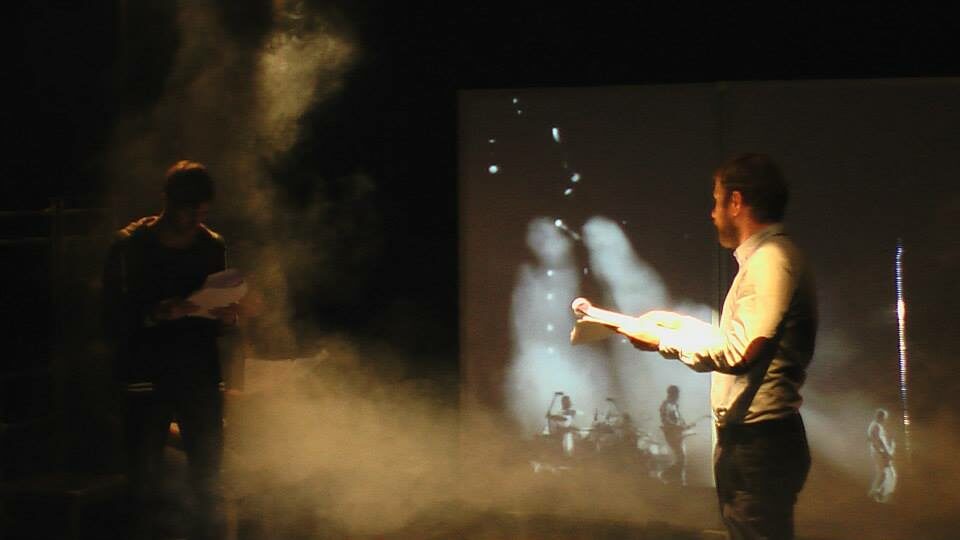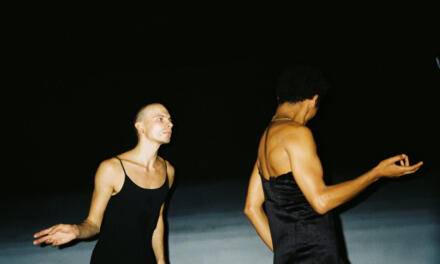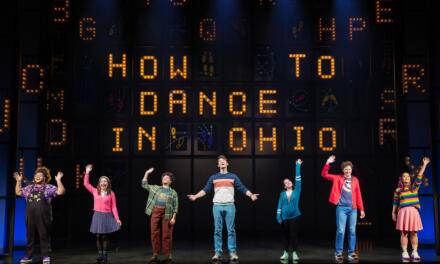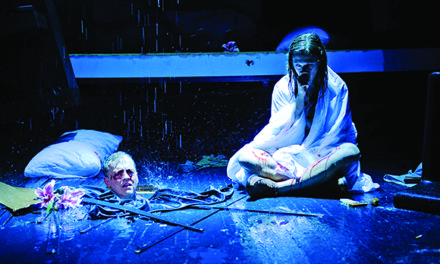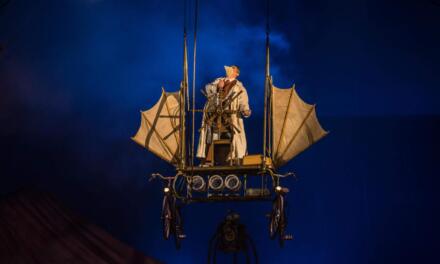In order to demystify Belarusian theatre for those, who are not familiar with it, it might be interesting to learn one of the common tendencies of the last decade, which is the use of sound as performance’s artistic tool of highly aesthetics nature. Although this tendency is not the most popular trend, it deserves to be mentioned, since it helps to lift the curtain of the mystery of the Belarusian theatre.
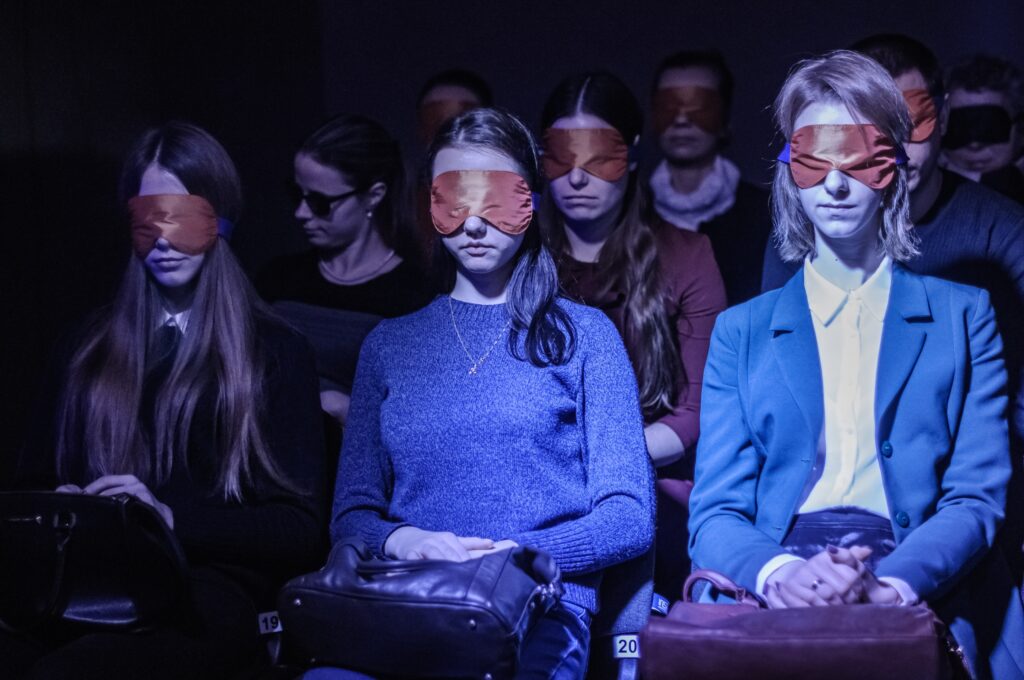
Team Theatre – Heather Honey. Photo Credit: Uljana Mihalcova
It is not a secret that sound design is the part of the theatre art since ancient times. There are thousands and thousands of both cutting edge digital and old-school mechanical devices that were specially made for producing sounds for the stage. And since the hearing is the same integral part of human life, as sightseeing, plays that are completely silent are not so often. But there’s an opposite type of performances–stage plays, that builds the plot development only by creating the sonic realm.
When it comes to talking about audio-based theatre performances the first thing that comes to mind is radio drama. Contemporary theatre broadens this sound-theatre palette with several new types of plays. The first one is the further development of radio drama, which utilizes digital technologies in order to add a new experience to the listener. Such experience can be achieved by the augmented reality technology, a combination of audio drama and a city tour, etc.
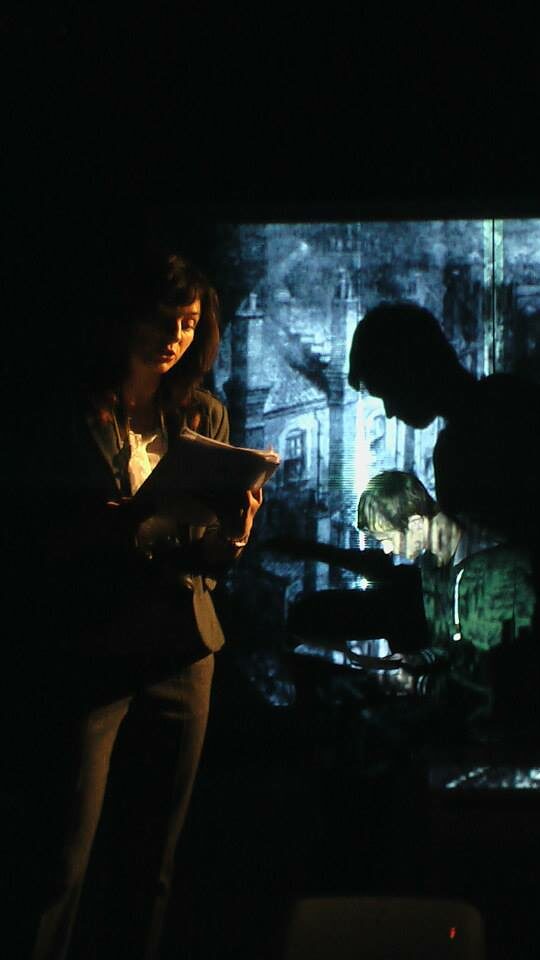
A Song Of The Immigrant (November 5, 2014) Photo Credit: Natalia-Rosalia Rodina
Another contemporary theatre’s sound-based performance is a stage play, with broader use and bigger role of the sound design on stage. In such plays, the sound is as important as the actors’ acting. Supplementing of an extremely detailed and naturalistic sound environment can significantly enhance even the staging that meticulously follows the ideas of minimalistic “Poor Theatre.” On the other hand, performances with active use of multimedia technologies and video projections might become “synergistic attraction” by utilizing a complex sonic atmosphere. It is the possibility of attracting the audience that makes this type of sound use on stage become more popular among Belarusian theatres.
Finally, the third form that is not as new as it seems to be is the sound-only stage performance. The main idea of such theatricals performed by Foley artists, musicians, and sometimes actors is that they are first and foremost meant to be listened, not to be watched. The visual part of the play will show how Foley artists will use sound-machines, samplers, or even household items to create soundscapes, which will tell a story in a sonic non-verbal way.
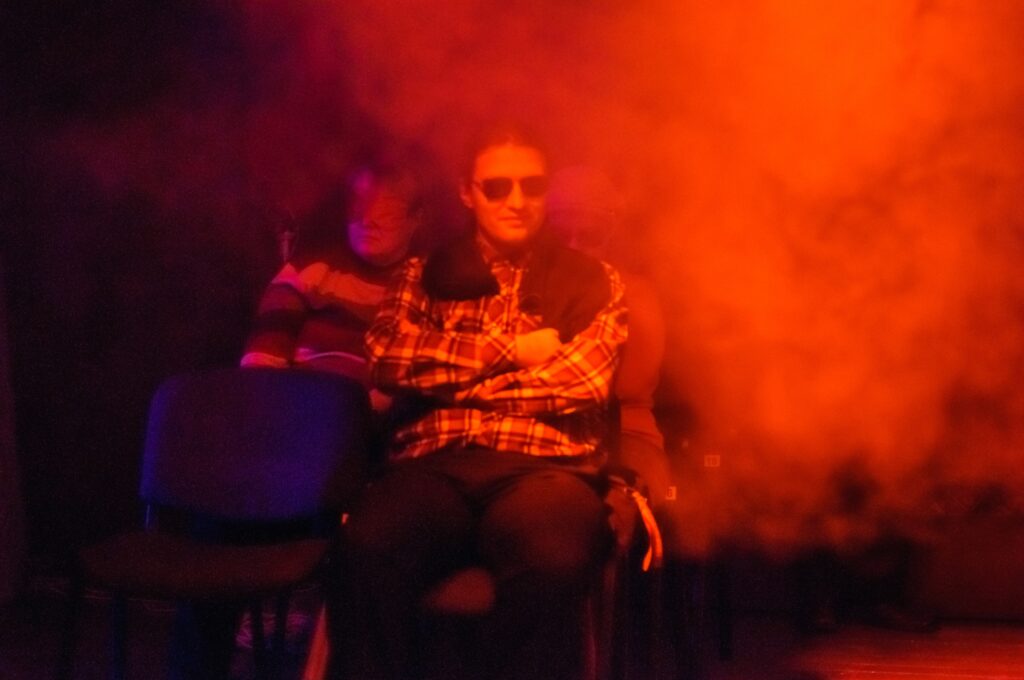
Team Theatre – Heather Honey. Photo Credit: Uljana Mihalcova
Moving back from the theoretical question of sound-based performances to examples of audio-expanded Belarusian performances, several sound-based theatre productions of local theatres should be considered. First noticeable one is audio drama/documentary project Brest Stories Guide by the Brest theatre company “Kryly Khalopa” (“Wings of a serf” in Belarusian).
The play itself tells a story of the Brest ghetto and the destruction of the Jewish community during 1941–1942 by Germans. It is a journey through the “non-existent” Brest that is based on archive files, books, photos, and eyewitness accounts. The performance is some kind of investigation with the hearing of witnesses in the case of anti-Semitism and the Holocaust in Brest during the Second World War. The mobile application, consisting of an audio performance (performed and recorded by the best actors of the Brest theaters) and a map, allows the audience to move freely along the route of the Jewish heritage and event sites. The stage of this play is the streets, buildings, and courtyards of the city, what allows you to see how the outlines of an old Brest has disappeared, and how they are showing themselves through the appearance of a modern city.
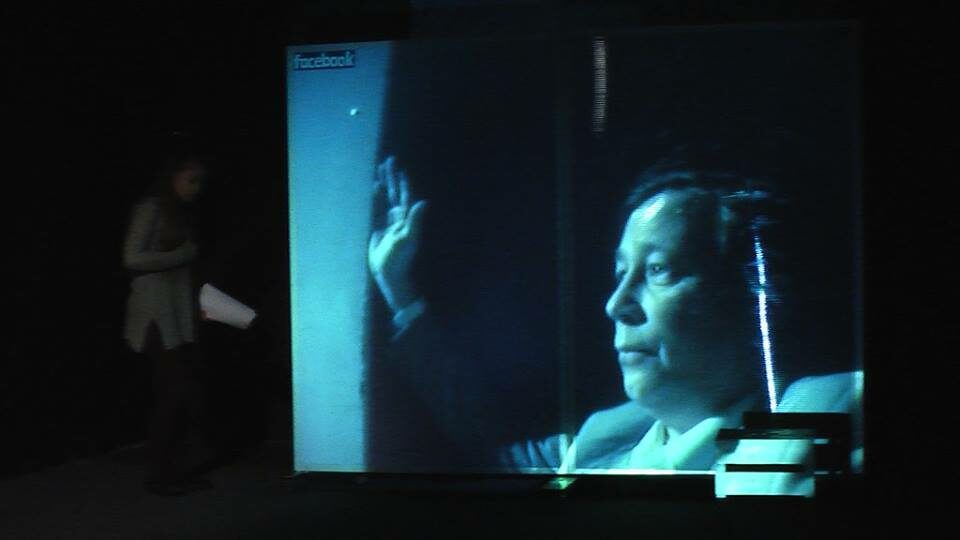
Where The Train Goes (January 11, 2016) Photo Credit: Natalia-Rosalia Rodina
At first glance, it is difficult to link this project with the common forms of Belarusian theatre since it consists of a smartphone app with a route map and an audio performance. The second part of this project is the city itself used as a stage. In fact, the Brest Stories Guide is a symbiosis of the theatrical/journey and the classic radio drama, which is important because it regenerates the radio drama in a new contemporary form. Belarusian radio drama is in decline due to audio-books market development, an abrupt change of repertoire in the late 1990–early 2000-s (which caused a loss of the Belarusian radio drama’s target audience). Also, Belarus has never had such a continuous tradition of radio plays as for example the UK with The Archers show. That’s why Brest Stories Guide looks like a possible future of regional radio drama shows.
A good example of theatre plays with a developed sonic sphere is the staging of Anton Chekhov’s play The Wedding presented in the Yanka Kupala National Academic Theater ten years ago in February 2009. This co-production of Belarusian Yanka Kupala Theatre and Soundrama Theatre Company from Russia is a nice example of real-time use of the sound engineering on stage with massive use of delay, reverberation, and modulation effects. Application of neither of sound effects mentioned above is unique for theatre. But this exact theatric was building the way of acting around creating soundscapes out of the actors’ speech and stage noises, by capturing all the sounds with microphones and processing them with multiple sound effects.
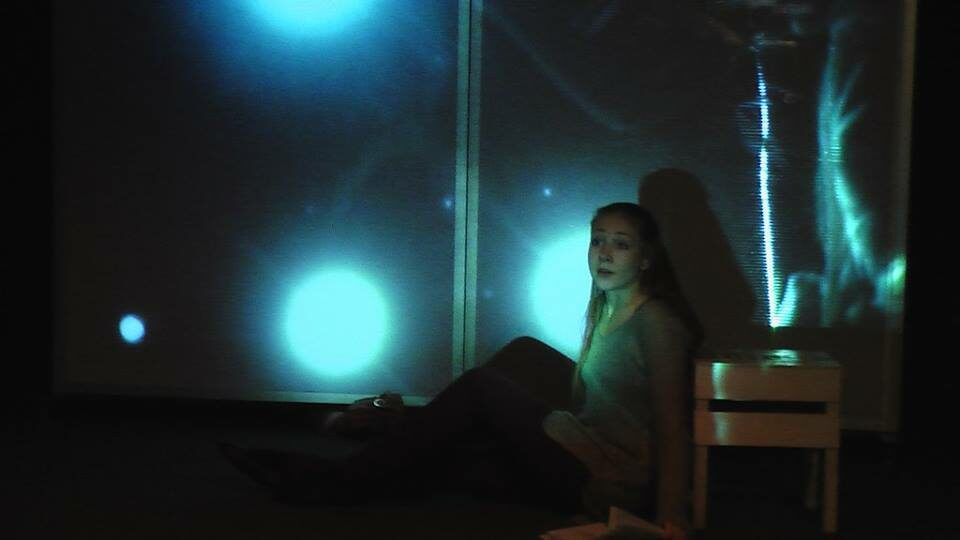
Where The Train Goes (January 11, 2016) Photo Credit: Natalia-Rosalia Rodina
Vladimir Pankov who is the director of the production designates his style as a mixture of genres that blur the borders between different types of art in an aim to create something completely unusual and new. Pankov puts Chekhov’s well-known play into the wedding party atmosphere full of drinking songs, rampant merriment, and hot dances. Everything seems to be surreal because it exists in some kind of “drunken stupor” outer space, created by lush, vibrant and shimmering sound effects. It is the character of the sound that establishes the nature of this staging.
The last example of Belarusian “sound theatre” which embodies the concept of predominant sound role in staging is the works of “Team Theatre”–a small theatre company from Gomel. The theater refers to its performances as “presence plays”–atmospheric performances, which set the creation of a complex sound environment as their main aesthetic toolkit. The actors and Foley artists use samples, sound-machines, as well as real objects to produce the sounds during the show: squib explosions, sword battle noise produced by real swords hitting each other, the sound of a broken window produced by the box full of glass that has been dropped onto the floor, etc.
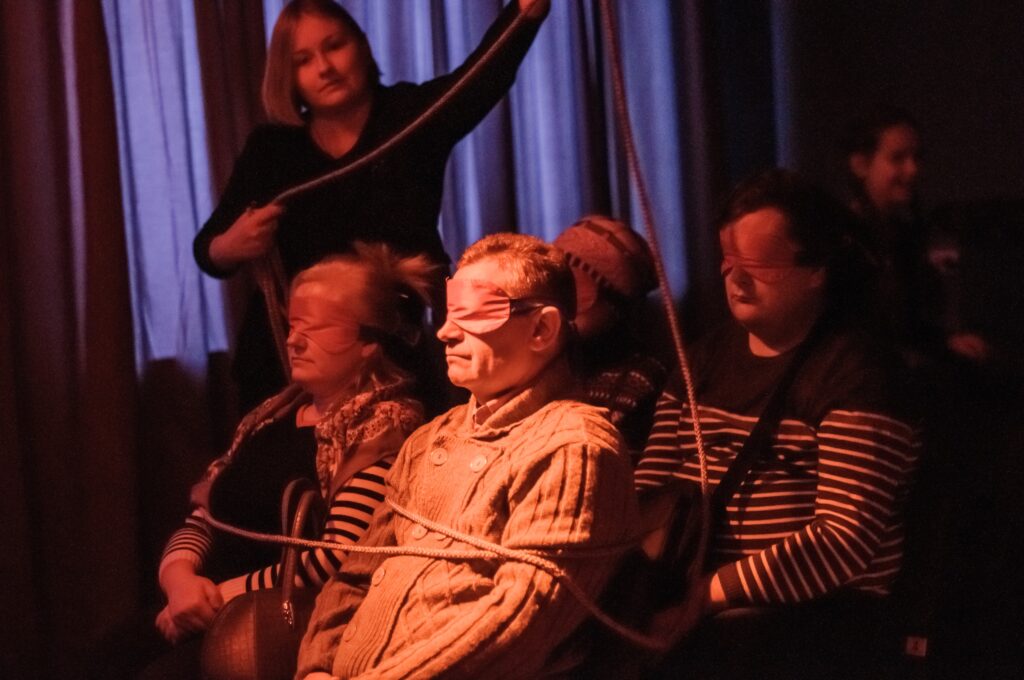
Team Theatre – Heather Honey. Photo Credit: Uljana Mihalcova
The history of Team Theatre has begun when six actors from Gomel state theatre decided to organize their own theatre company in 2016. The choice of sonic aesthetics was affected by the occasion when screenwriter Andrei Kureichik has presented Team Theatre with a play Nocturne. Since the auditorium of the Team Theatre company was small, and there was literally no space for placing both audience and stage design, the production team decided to offer their audience to close their eyes and listen to the action of the play that happens around them. The staging received good reviews from critics, and the theatre crew decided to choose this concept as their own exclusive style. So when the theatre was officially established back in 2016 it has declared its modus operandi to make theater accessible to deaf and blind people. Team Theatre founders defined their stage genre as “atmospheric performances.” To make their statement clearer to the audience of the “atmospheric plays” the production team is asking the audience to blindfold themselves during the show, so visually impaired and blind people are given the opportunity to immerse themselves in what is happening on stage on a par with everyone. This definitely explains the sonic nature of “atmospheric performances” by Team Theatre. Also, it should be noted that these works are unique since no one else in Belarus offers such kind of experience.
One of the latest works of “Team Theater” is the production of Robert Leewis Stevenson’s ballad Heather Honey. The ballad text is complemented by the sonic realm, made of the noises of water, wind, battles, and also supplemented with the smell of a drink from a ballad.
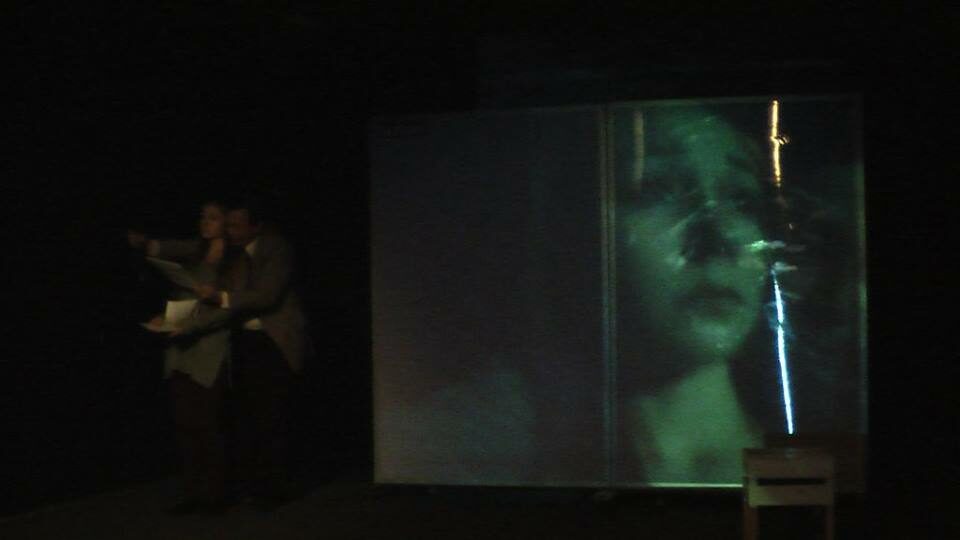
Where The Train Goes (January 11, 2016) Photo Credit: Natalia-Rosalia Rodina
The constant search for new effective aesthetic tools for theatrical practices was the driving force of theatre evolution through the ages. During the previous century, there were multiple technologies of sound recording, audio effects processing, as well as acoustic imaging has been discovered. Huge impact on the development was made by French avant-garde “Musique Concrète” of the late 1940s, which even has become a forerunner of the future electronic music.
Significant sound design achievements for stage use made the sonic means of artistic expression being a selling point to attract a potential audience. Of course, it is impossible to insist that the format of an audio play is a panacea for solving the problem of the empty hall. Without a doubt, theatre should be different in terms of genres, forms, and aesthetics paradigms. Though there are not so many sonically enhanced theatrical performances in Belarus, the existing plays have noticeable sound solutions that employ worldwide trends in theatrical avant-garde.
This post was written by the author in their personal capacity.The opinions expressed in this article are the author’s own and do not reflect the view of The Theatre Times, their staff or collaborators.
This post was written by Alexander Mantush.
The views expressed here belong to the author and do not necessarily reflect our views and opinions.

